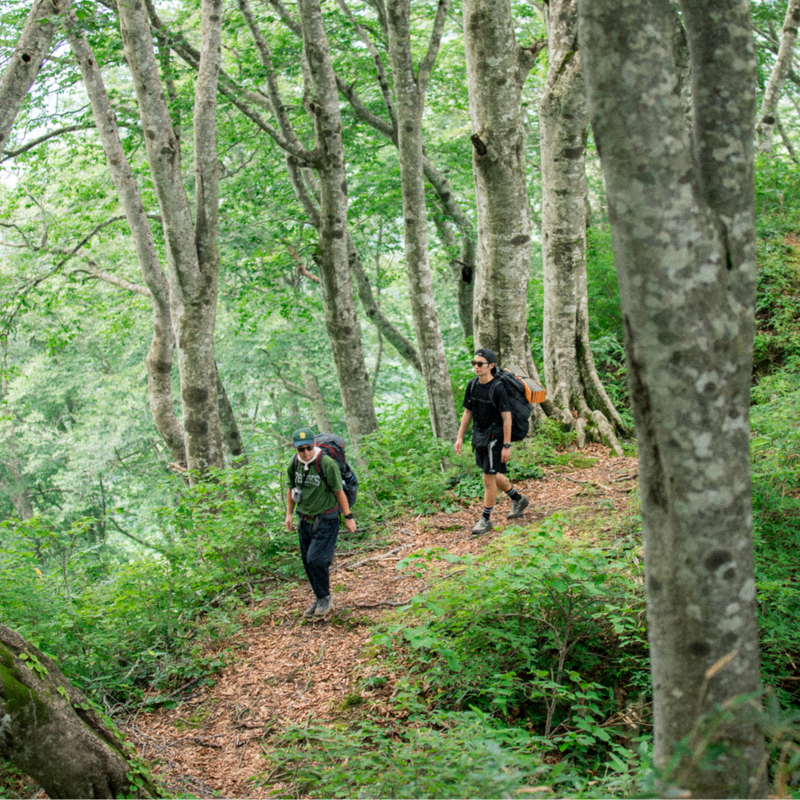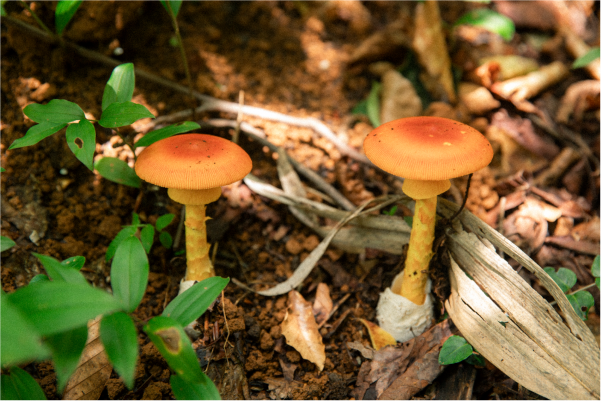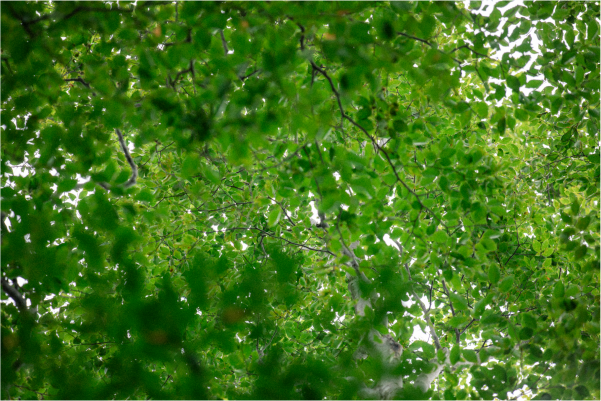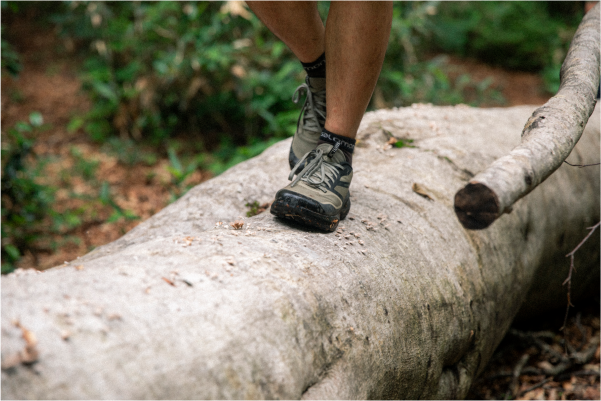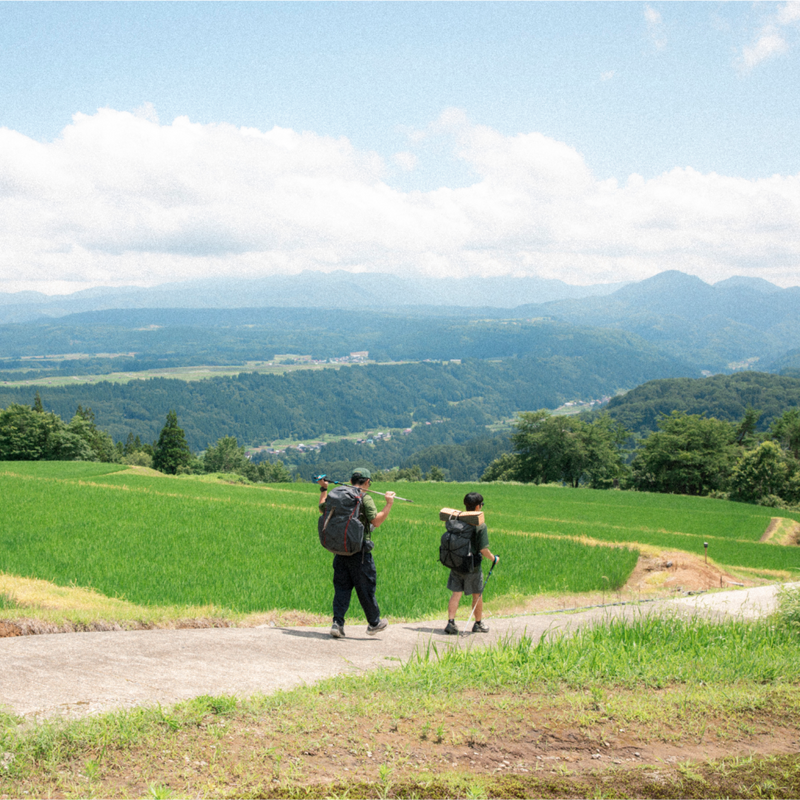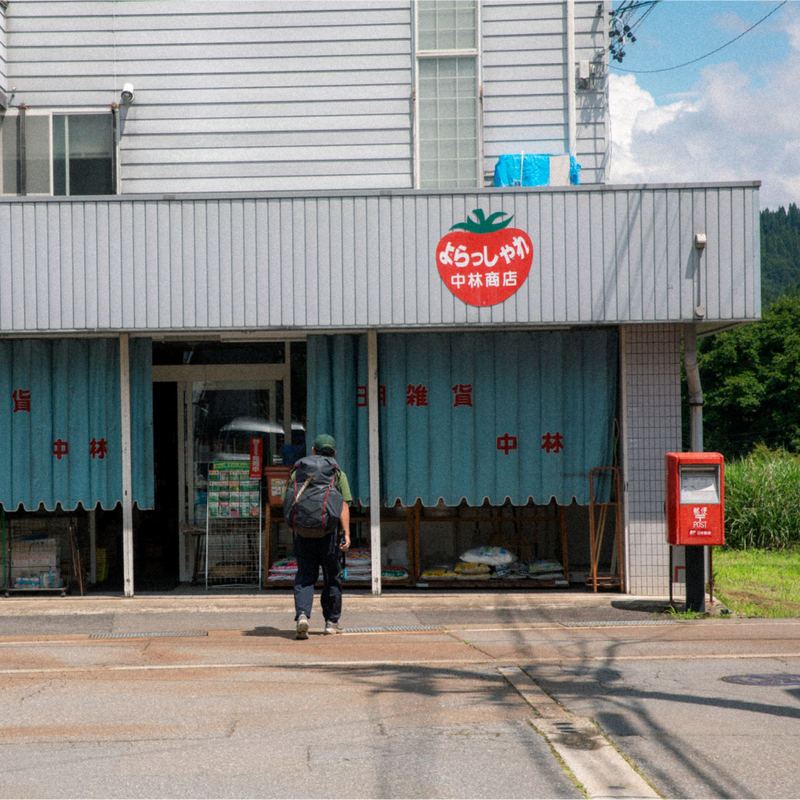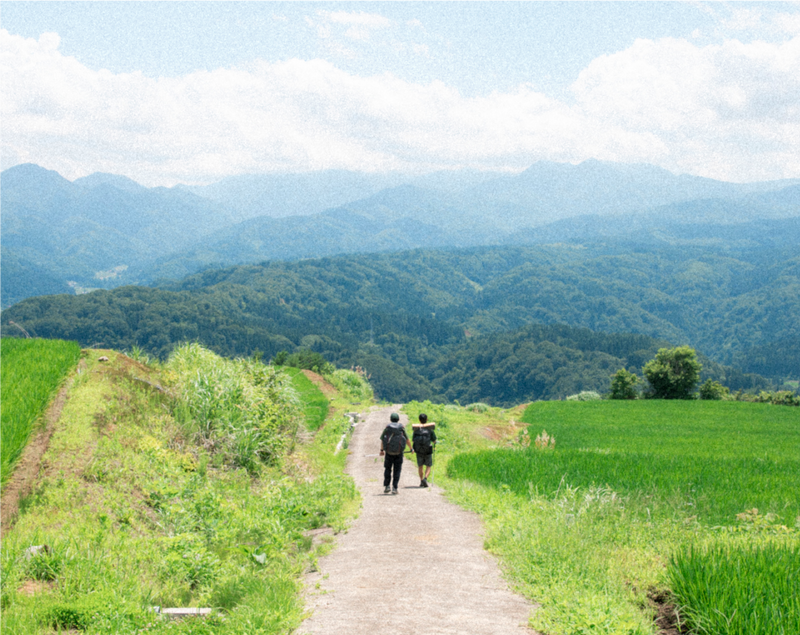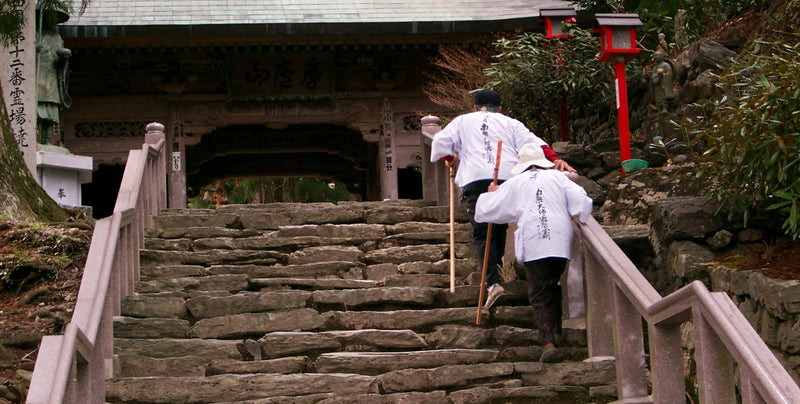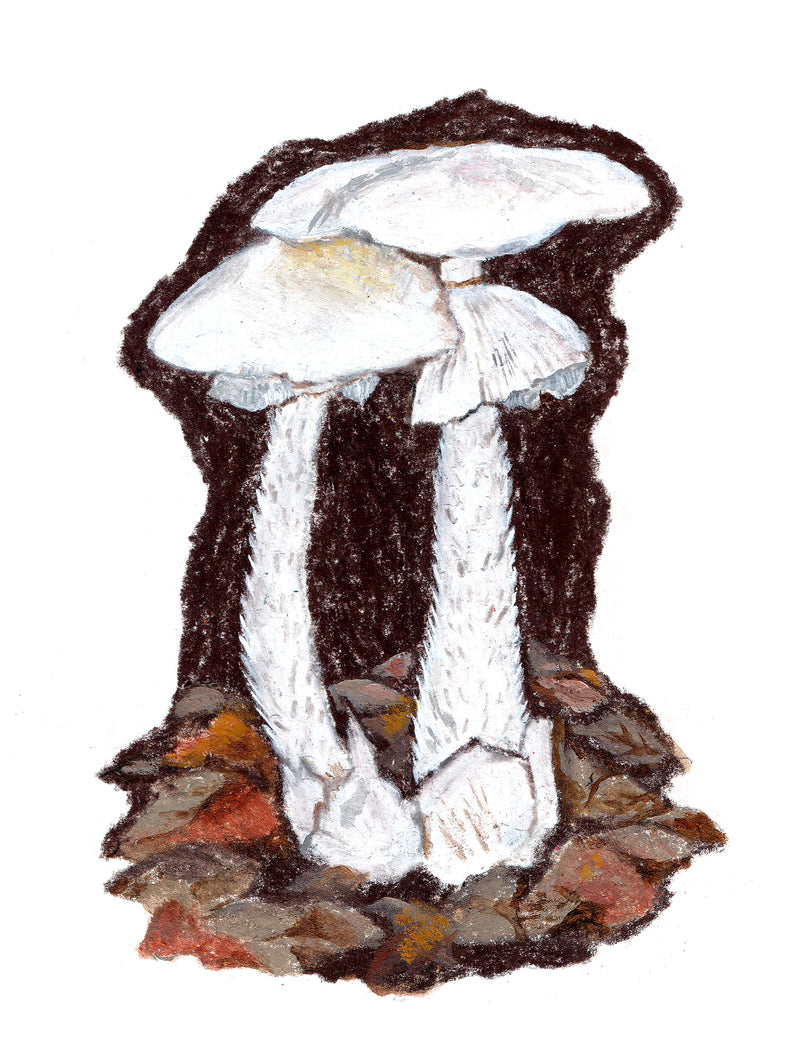The final trail descends through a beautiful beech forest. It's a wonderful trail that starts and ends among beech trees.
After walking the trail, we waited for a demand taxi to go back. While lying on a bench, I asked Shibayama, the editor, about his impressions of his first trail. By the way, I got bitten by a lot of gnats! It's because I was walking in shorts.
"It's more than just itchy, it hurts (laughs). My luggage was heavy, so it was quite tough at first. But by walking slowly, I started to notice things I normally wouldn't notice, and it was three days of discoveries. I often go to Mt. Takao for trail running, and I thought it was a place where you run, but next time I think I'll try walking slowly."
On the way back, the car quickly travels the same distance as the one we walked today. But after walking the trail, I feel like sticking my tongue out and saying, "Serves you right." Even if we travel the same distance, the experience is much more intense because of the time we spent.
Edward Abbey, an American nature writer, once said:
"Walking takes longer than driving. Walking expands time and prolongs life. Life is short, so there's no point in rushing."
Yes, that is the appeal of long trails and walking trips.
When you talk to people with experience on long trails, there is one thing that almost everyone will say.
"I wanted to keep traveling as long as I could."
I strongly agree. If the end of a three-day, two-night trip is sad, I can't imagine how lonely it must be for a through-hiker who has been doing it for months.




